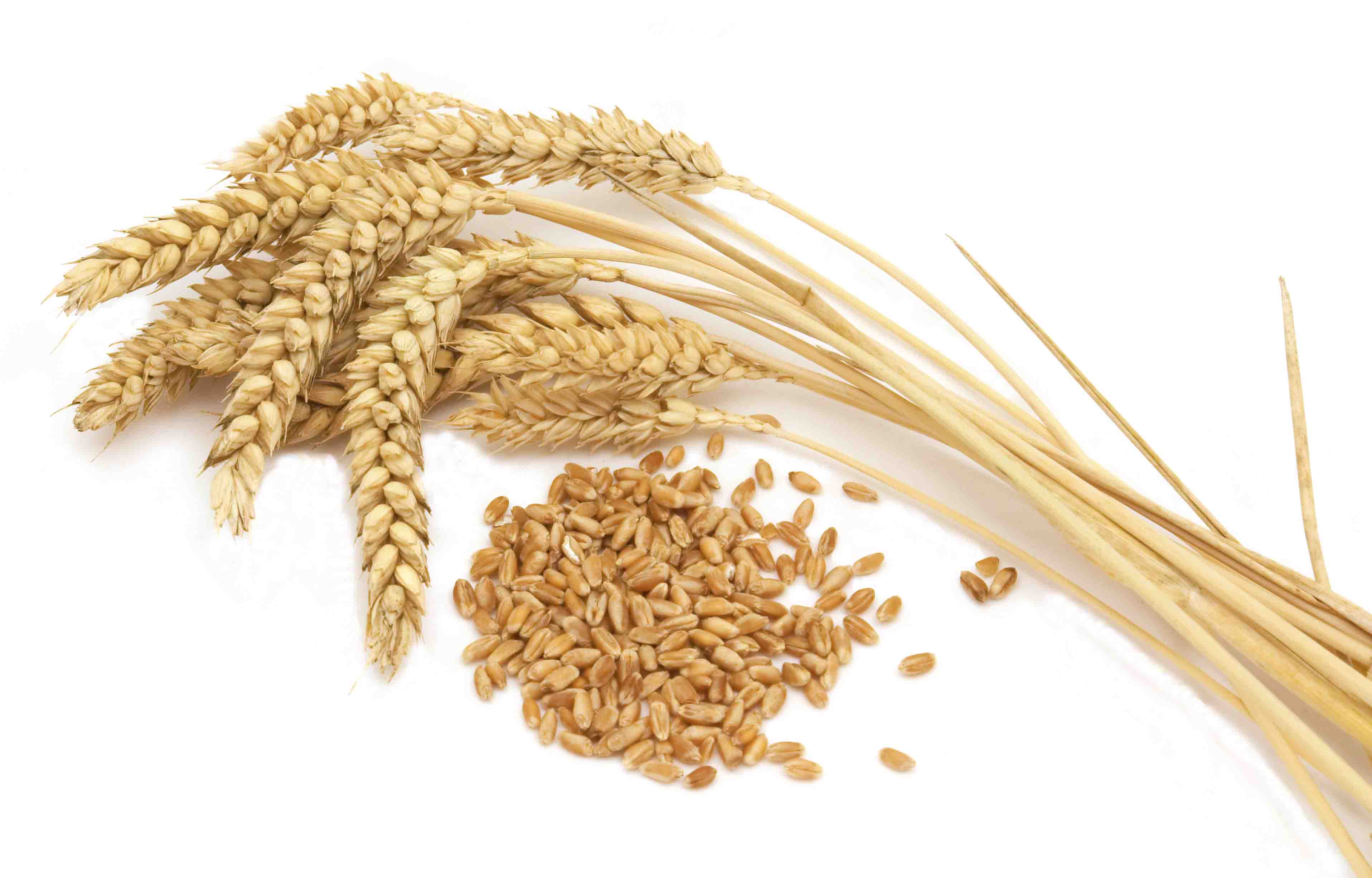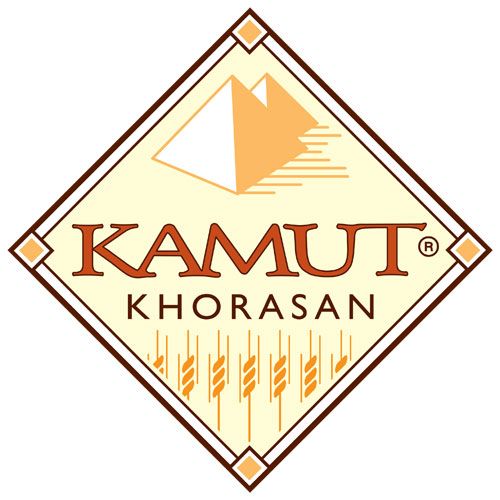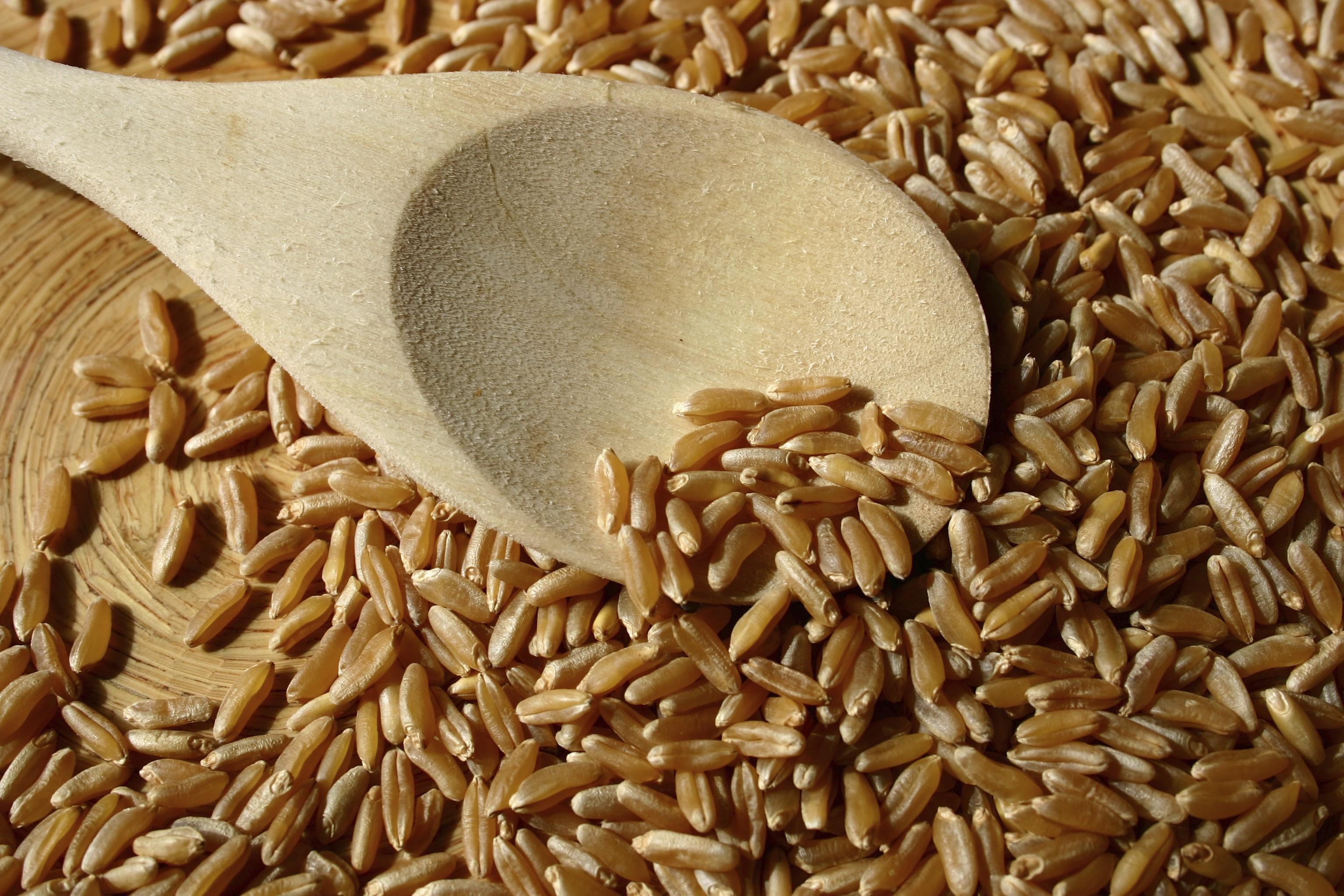No products
Kamut – Myths, Benefits, Uses

Kamut®, benefits and facts. In recent years there has been a spread of Kamut® based products (pasta, bread, sweets and other baked products) and Kamut® wheat, particularly in Italy. To which type of grain do we commonly refer when we use the word Kamut®? Erroneously the majority of the people think that the term Kamut denotes a type of grain, in reality it simply refers to a registered trademark of the American company Kamut International.
The term Kamut has become of common use to identify a type of grain part of the botanic subspecies Triticum turgidum ssp. Turanicum, also known as Khorasan wheat.
Myths about Kamut®
The type of grain under trademark registration by Kamut International is guaranteed to be part of a typology of grain that has never been hybridized or crossbred. However this does not make Kamut® wheat and its derived products suitable to persons who suffer from celiac disease since, contrary to the common opinion, Kamut® contains gluten and thus its consumption may not be suitable to persons who suffer from intolerance to it.
It is important to pay attention to Kamut® based products which may be erroneously advertised as suitable to persons who suffer from celiac disease. It might be a banal misunderstanding or a unfair commercial campaign.

The choice of purchasing Kamut® based products is more related to personal taste or to the willingness of purchasing organic products rather than to health reasons. Also, it is important to notice that the grains of this wheats come from the U.S. and Canada since its cultivation is allowed only on specific lands.
Kamut® benefits
What can be the benefits of Kamut®? Compared to other wheats, it has a higher quantity of mineral salts (in particular selenium, due to the production area), proteins and vitamins. It is also considered easily digestible compared to the “common” or “modern” wheat. These properties are due to the fact that Kamut® wheat has never undergone industrial hybridization, for this reason its original nutritional characteristics have been maintained over the years. Due to the absence of hybridizations, Kamut® might be more suitable to persons who suffer from wheat allergy.
Kamut® might contain 30% more vitamin E compared to the “common” wheat, for this reason it has been attributed with antioxidant properties.

Kamut® brand is only issued in case of Khorosan wheat cultivated according to the indications defined by Kamut International. Wheats that have undergone hybridization or genetic modifications are not admitted, and due to the American origin of Kamut® wheat, where GMO are widely spread, this aspect is considered a guarantee of security.
In Italy Kamut® based products can be processed only within companies that own an organic certification. Kamut® is considered a resistant variety of wheat particularly suitable to the principles of organic agriculture. It is adversity resistant and does not require pesticides to obtain rich harvests.
Kamut® usage
In Italy there are several Kamut® based products as flours, bread, sweet and salted packaged foods, plant milk, wheat in grains. Kamut® flour can be used to prepare both sweet and salted doughs as a substitute of the common durum or soft wheat flour. It is suitable for pizza, focaccia bread, plum cake, cakes, biscuits and other baked products.

Kamut® plant milk can be used as a beverage substitution for cow milk or in the preparation of recipes that require it. Kamut® wheat grains, flour, plant milk and other Kamut® based products are available in many organic product shops and supermarkets. Kamut® in grains are required to be soaked for 8 hours and a cooking time of 50 minutes. After this it can be drained off and used for the preparation of soups and salads and also in combination with other grains, legumes or vegetables.
The Italian "Kamut"
The presence of a registered trademark on a grain, whose production is constantly monitored, leads to suspect that Kamut Internationl is more focused on gaining a profit rather than protect biodiversity. The presence of these innovative Kamut based products on the supermarket shelves might have induced the consumer to purchase them because they seem “ancient” and healthier products than others.
However consumers should be aware of the fact that a Khorasan wheat variety, not registered with the brand Kamut®, is cultivated in some Italian regions as Abruzzo, Basilicata e Campania, where it is possible to find a typology of Triticum Polonicum wheat, called Saragolla.

This is a type of wheat cultivated in Italy, which does not require to be transported from North America for thousands of kilometers, as it happens for the wheat registered under the Kamut® trademark.
For these reasons, it would be appropriate to promote the production of “ancient” wheats on the Italian territory, where cultivated typologies of wheat pretty are rare as Saragolla, a Sicilian variety of durum wheat, durum wheat Senatore Cappelli, considered similar to Khorasan and cultivated in Puglia and Basilicata, and the Verna, a wheat variety suitable to be cultivated at higher elevation as for instance in Casentino valley.
